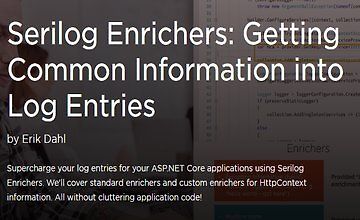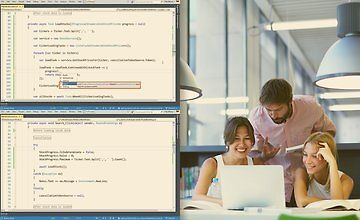
pluralsight
Площадка, ранее была Digital Tutors, предлагает курсы по разным направлениям в разработке. Качество видеокурсов держит всегда на хорошем уровне.
.NET Logging Done Right: An Opinionated Approach Using Serilog
Создание основ для ведения логов может сэкономить часы на устранение неполадок и предоставить ценную информацию об использовании и производительности во всех ваших приложениях. В этом курсе вы узнаете о 4 основных «вещах» (использование, производительность, ошибки и диагностика) для ведения журнала и о том, как их регистрировать.
Вы также узнаете, как глобально писать эти записи в логах, не вводя код журнала везде в приложении, чтобы разработчики могли сосредоточиться на бизнес-логике, а не на регистрации кода. Глобальное ведение логов будет показано со всеми версиями ASP.NET, приложений WPF, служб WCF и приложений TypeScript / JavaScript. Наконец, вы увидите методы поиска, изучения и визуализации записей, которые вы будете записывать как на SQL Server, так и в Elasticsearch, чтобы получить представление о приложении, его использовании и его производительности. К концу этого курса вы узнаете, как создать отличную среду ведения журналов, которая обеспечит огромные преимущества для вас и многих других людей, которые заинтересованы в ваших приложениях.

Площадка, ранее была Digital Tutors, предлагает курсы по разным направлениям в разработке. Качество видеокурсов держит всегда на хорошем уровне.

В этом курсе «Маршрутизация записей логов Serilog с фильтрами и форматерами» вы изучите основополагающие знания, чтобы получить записи логов ASP.NET Core, написанные ГДЕ вы хотите, и отформатировать, КАК вы хотите.

Serilog - это мощная инфраструктура ведения логов для приложений .NET, но во многих логах по-прежнему отсутствует критически важная информация, необходимая для полного анализа или устранения неполадок. В этом курсе вы изучите базовые знания об использовании Enrichers Serilog для веб-проектов ASP.Net Core.

Использование асинхронных принципов имеет решающее значение для создания быстрых и быстро реагирующих приложений. В этом курсе «Начало работы с асинхронным программированием в .NET» вы изучите основополагающие знания, чтобы эффективно применять асинхронные принципы для создания быстрых и надежных приложений.